| . |
 The folk dance and music which we see and
hear today are only art of the wider range of music played by the old
Maldivians. The folk dance and music which we see and
hear today are only art of the wider range of music played by the old
Maldivians.
Traditional Maldives Dances
Bodu Beru
Bodu beru is a music form entirely dependent on song and drums
for its effects. About twenty to thirty men, of all ages sing
and dance to the accompaniment of three large drums. Percussion
is made by small bells and an instrument known as the onugandu
(a piece of bamboo with horizontal grooves). The performance
begins on a slow tempo and increases till a very fast pace is
acquired, while the dancers gyrate and make funny faces. The
music has a strong back beat which involuntarily gets your foot
tapping. The origin of this music form is unknown. It has been
suggested by various authorities that it might have been brought
from somewhere in Central Africa.
Continued Below
Below are just a few of the dance
companies, dance schools, dancing organizations and dance wear suppliers
that that can be found in our comprehensive Directory of Maldives
Dance
Companies.
| Featured
Maldives Dance Company |
If you would like your Maldives
Dance Company, Dance Organization, Dance School featured here
then please email
bangkokcompanies@gmail.com |
There are many fine dance schools in
Maldives. I know I am in contact with them as we
supply a range of high quality dancewear products like leotards, dance
pants, dance dresses and other dancing apparel.
Bangkok Companies supplies an amazing range
of dancewear from Thailand. I have looked at these dance garments and dance
accessories in detail. There is only one word to describe them Superb.
For more details click on the pictures or send an email to
bangkokcompanies@gmail.com We
regret at this time we can only satisfy Maldives
wholesale dancewear requests.
"Dancewear designed by
dancers for dancers"
| Dance
Dresses |
Kids Leotards |
Adult
Leotards |
Dance Bras |
|
 |
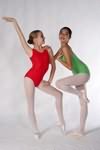 |
 |
 |
|
| |
Dance Pants |
Tutu's |
Dance
Shorts |
|
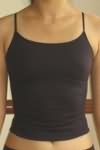 |
 |
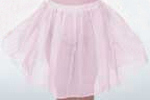 |
 |
|
| Dancewear |
Dancewear Organizers |
Dance Bags |
Dance
Backpacks |
|
 |
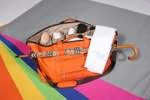 |
 |
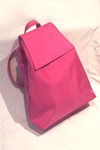 |
|
Bangkok Companies is a full service
product sourcing company in Thailand. For All your
dancewear needs please email
bangkokcompanies@gmail.com with your requests.
Dance Schools in Maldives, Dancewear Suppliers, Dancing Organizations
--------------------------------------------------------------------------------
Maldives National Commission for UNESCO
Gaazee Building; Ministry of Education, MV-20 05 Male Maldives
Tel. (960)32.32.54, 32.32.61; Fax (960)32.12.01
National organization
--------------------------------------------------------------------------------
Traditional Maldives Folk Dances
 Thaara Thaara
Thaara is the Dhivehi word for tambourine. It is performed by about 22
people seated in two parallel rows facing each other. It is a type of music
which has a semi religious touch, and is distinct to men only. In Thaara,
there is both singing and dancing. The early songs which accompanied Thaara
were in Arabic. The songs start with a very slow tempo and gradually
increases to reach a crescendo.
The performers wear white sarongs and white shirts with a green scarf tied
around their necks.
Thaara was introduced to The Maldives by the Gulf Arabs who came here in the
mid 17th century. A type of music similar to Thaara is still practised in
the Gulf and in south Arabia.
Thaara was played in the fulfilment of vows, and special times was
accompanied by a pseudo act called "Wajid" which is now banned by the
government, but the singing and dancing still continue as an entertainment.
Gaa Odi Lava
Gaa Odi Lava is a music and dance which expresses the satisfaction by a
group of people on completion of a task involving hard manual work. Some say
Gaa Odi Lava was first sung during the reign of Sultan Mohamed Imadudeen I
(1620-1648AD). In his effort to defend Male', he wanted to build a break
water around the island. For this purpose he divided the work force to
various "odi" or vessels, for carrying coral stones from the many reefs.
Upon completion of the task, workmen from each "odi" paid a ceremonial visit
to the Sultan, singing songs to express their happiness. And hence Gaa
(stones) Odi (vessels) was born.
In the time of Sultans, whenever a job ordered by a Sultan was completed,
the workers involved would walk to the ground in front of the royal palace,
in a special dance called "Dhigu magu negun". In this type of walking, the
dancers each carry a special stick and walk in two rows while singing and
dancing. Once in front of the palace, the songs gradually increase in tempo
until the whole team forms a ring around a special container, still
continuing the dance and singing. Inside the container are gifts for the
dancers, given by the Sultan. The taking away of the container is called "Dhafi
Negun" which is also the motive of dancing and singing. In the olden days,
the songs sung in Gaa Odi Lava were in Arabic.
Langiri
The Original Langiri goes back to the time of Sultan Shamsuddin III who
ruled The Maldives in the early 20th century. The youth of that time
developed and modified the then popular Thaara to their taste giving the
name Langiri.
Langiri is a dance and music played by young men as an evening stage show.
To perform Langiri each dancer holds two sticks that are about two feet
long. The sticks known as "Langiri Dhandi" are decorated, each having a
colourful artificial flower at the head end.
In the dance the performers sit in tow rows of twelve or in six and as they
sway their bodies waist up and at the same time keep clapping the Langiri
Dhandi in different styles. Each dancer will hit six Langiri Dhandi
belonging to his three neighbours seated in the front row. There is also a
lead singer who sits in the front of their right row. The length of a
Langiri show varies but usually it lasts until seven or six songs.
Dhandi Jehun
This dance is attributed to the atolls and the performing style vary from
atoll to atoll. The participants are all men and they dance in a single
group of about 30 people. The dance which lasts about one hour can be held
at day or night, in a street or in a ground, on nay day of celebrations.
In Dhandi Jehun, the songs are "Thaara" songs or "Unbaa" songs and they sung
by a lead singer. However, the group too participates in the song, and as
they sing, they dance and walk to the beat of the song. Sometimes drums or
tambourines are held by two additional people who would walk behind the
group.
In the dance which lasts about an hour, each dancer holds a "Dhandi" (stick)
of about three feet long. As he dances, he claps hi "Dhandi", to one
belonging to a partner facing him and continue dancing and singing to the
beat of the music as well as to the sound generated by the clapping of
sticks. The dancers do not have any special dress. However, in any given
performance, they will wear a uniformed dress usually it is a sarong, a
T-shirt, a white head cloth, a sash around waist and a white under-garment.
Dhandi Jehun is believed to have come form Malik (Minicoy Islands). Is is
said there is a similar dance there known as "Malik Dhandi".
Bolimalaafath Neshun
This is a dance performed by women. The dance shows the old tradition of
women offering gifts to the sultan, on special occasions such as Eid
festival. The gifts, usually shells, are kept in a small vase or box known
as the "Kurandi Malaafath". It is kept closed and is intricately decorated
from outside. The vase is covered in a piece of colourful silk cloth. The
women who carry the case too wear bright coloured local dresses which are
fumigated by burning incense.
In the dance there are about 24 people performers. As they dance and sing to
the tune of music, they form into small groups of two, three, four or even
six, and walk towards the sultan to offer the "Kurandi". The songs usually
express their sentiments or are based on national themes.With the change of
government from monarchy to a republic in 1968, the tradition of offering
gifts to the sultan ceased. But the dance has survived, and today it can be
seen on stage shows. Bolimalaafath Neshun is still regarded as the most
important of all the dances performed by Maldivian women.
Maafathi Neshun
The movements in Maafathi Neshun are similar to Langiri. But the performers
are all women, and they wear national dress. This is a group dance in which
women dance in two rows of ten. Each performer has a semi circular string
which is about three feet long with artificial flowers attached to it. They
hold the strings and dance in different style in small rows or groups of two
or three displaying different symbols.
Fathigandu Jehun
Fathigandu Jehun is an evening stage music in which a group of men or a
seated single person dance in tune with the songs. To bring out the sound of
music two pieces of bamboo stick that are about six inches long are held in
each hand of all dancers. The two pieces of sticks on either hand with their
outer side touching each other are then clapped together while at the same
time the dancers show their skills in twisting their torso in tune with the
music and song. There is also a drummer who beats on a tin and at the same
time lead the song.
In Fathigandu Jehun the songs are usually epics. The story is narrated in
the style of a song and to the beat of the music. A famous Fathigandu song
is "Burunee Raivaru" which tells the story of a sultan who went in search of
a wife.
Bandiyaa Jehun
It could be said that Bandiyaa Jehun is an adaptation of Indian pot dance.
It is performed only by young women. In this performance the dancers mark
time to the beat on the metal water pots they carry. In order to produce
sufficient sound, the dancers wear metal rings on their fingers. Although
there is no definite costume, a uniform dress is worn by the performers
which is mostly a long skirt and a blouse, and today it is usually "Dhigu
hedhun", a local dress.
Today, most of the groups use a number of musical instruments including drum
and harmonica, and the dance is performed both standing and seated. The
costume and music too have undergone considerable transformations so as to
keep pace with the changing trends.
Kadhaa Maali
This dance, of which the origin is unknown and dates back a few centuries,
survives only in Kulhudhuffushi in south Thiladhunmathi Atoll. The
performance is initiated by the beating of a number of drums and a "Kadhaa",
an instrument made up of a copper plate and a copper rod.
With the music which is emanated from the beating of the drums and the
Kadhaa, a large number of people usually about 30 men, dressed in different
postures and costumes, take part in the dance. The costumes depict different
types of evil spirits and ghosts. These evil spirits or ghosts are referred
to as "Maali".
The dance is associated with the traditional congregation of the elders of
the island who practise a late night walk around the island to ward off the
evil spirits believed to be associated with terrible sickness and epidemics
prevalent in the island community. The midnight walking usually begins after
the late evening prayer, would continue for three consecutive nights and on
the third night as to mark the end of the working the island community will
engage in different types of music and dancing. This is a prelude to
Kadhaamaali which is the final and the major event of the night.
While Kadhaamaali is being performed, people of different trades will come
to the venue on a group by group basis bringing along with them their
instruments, displaying their skill and craftsmanship in the form of a
dance. Once their performance is over they would simply go leaving the
Kadhaamaali dancers who would continue dancing until it was all over by
about midnight.
At present Kadhaamaali is performed only during festivals. But, even now in
times of terrible sickness the dance is still performed after the "three
night walking".
The
Maldives Folk Music
|
|



 The folk dance and music which we see and
hear today are only art of the wider range of music played by the old
Maldivians.
The folk dance and music which we see and
hear today are only art of the wider range of music played by the old
Maldivians.











 Thaara
Thaara